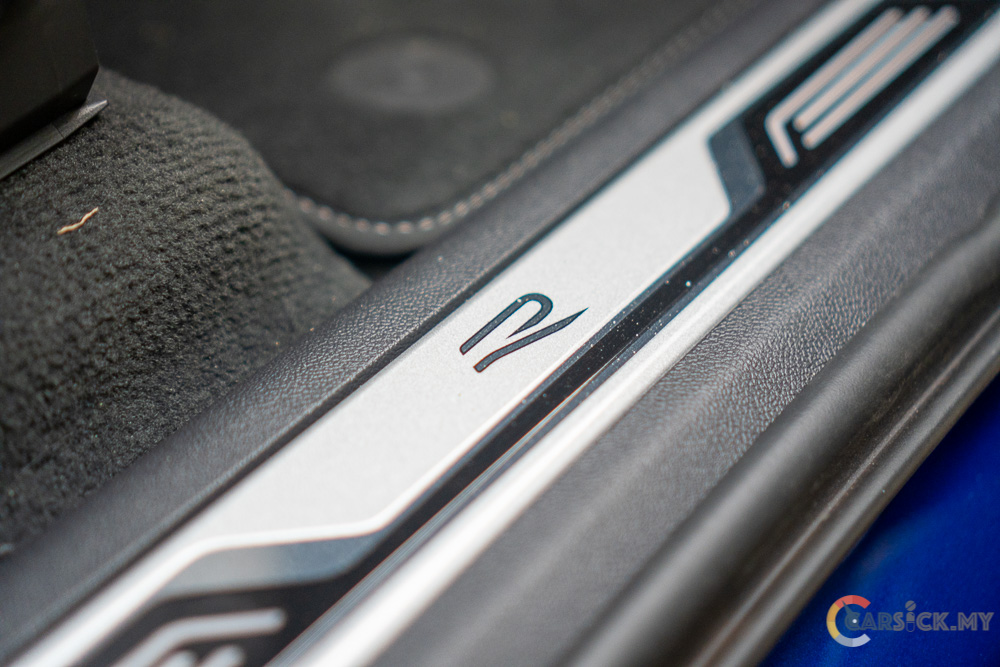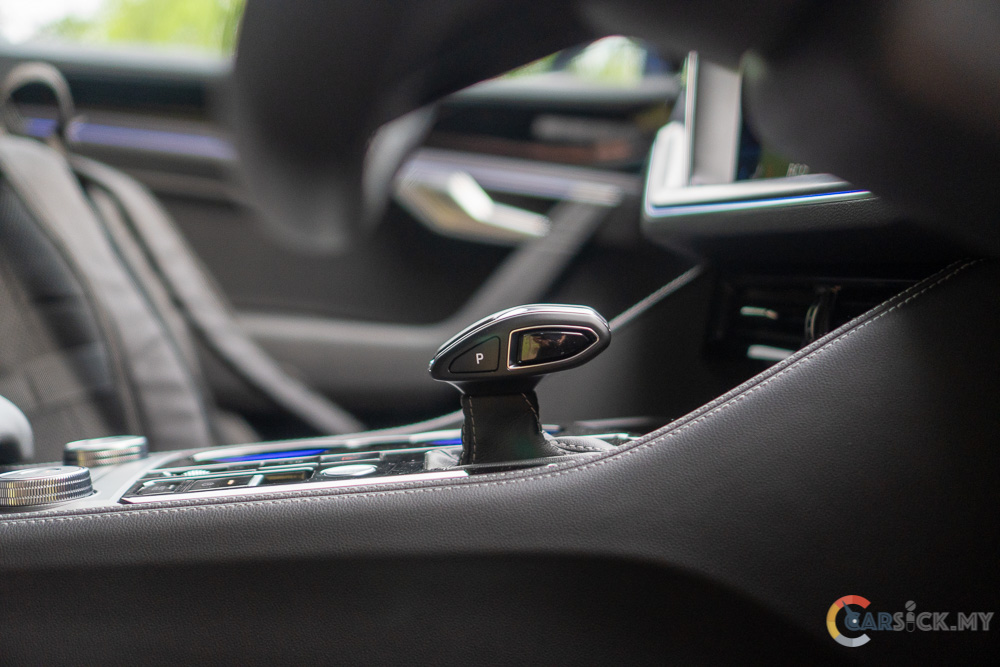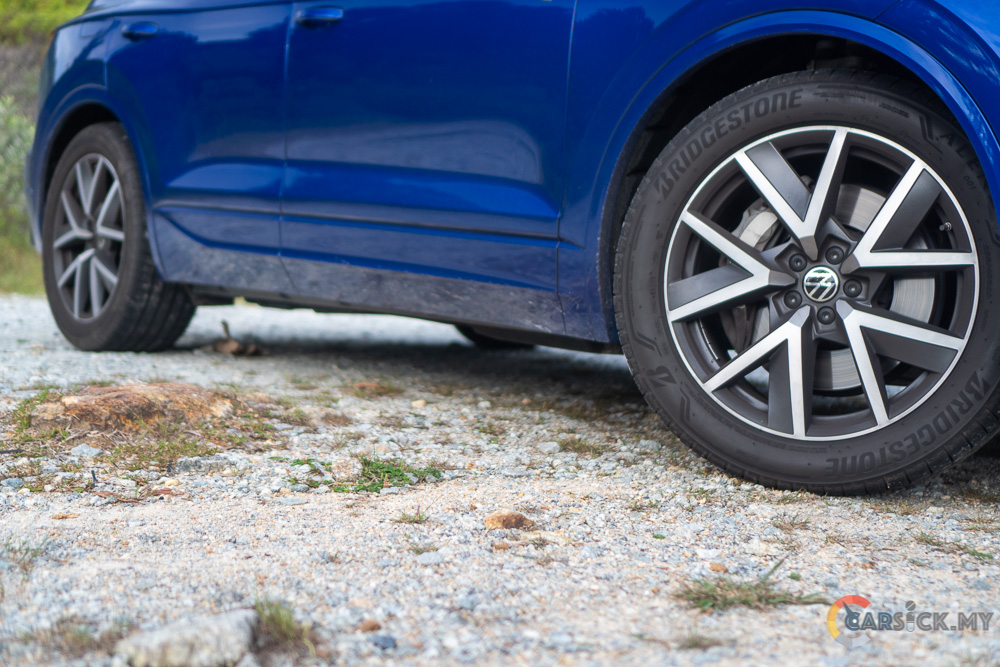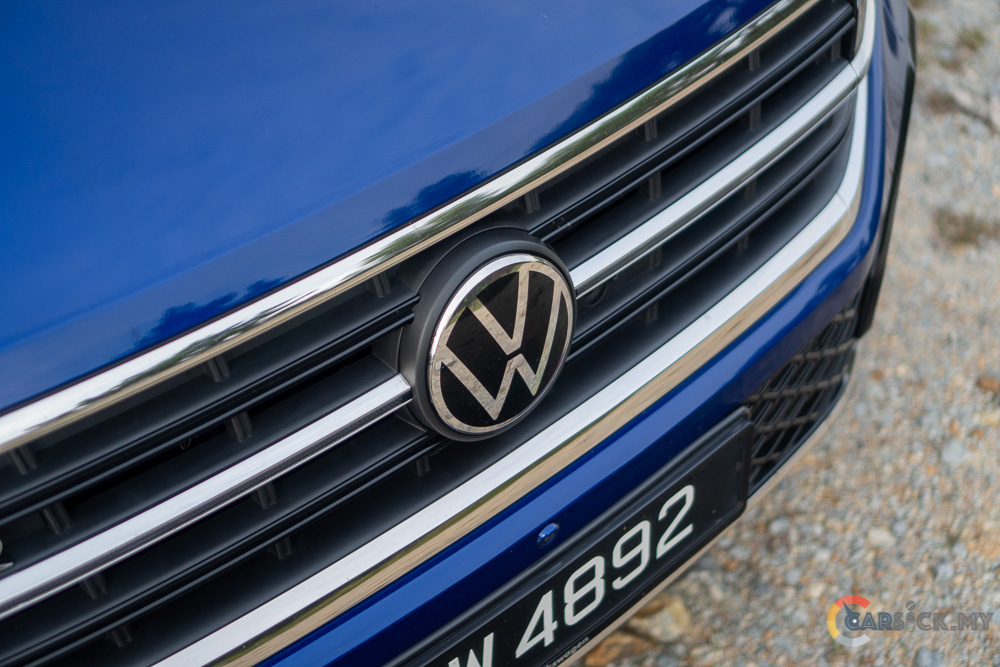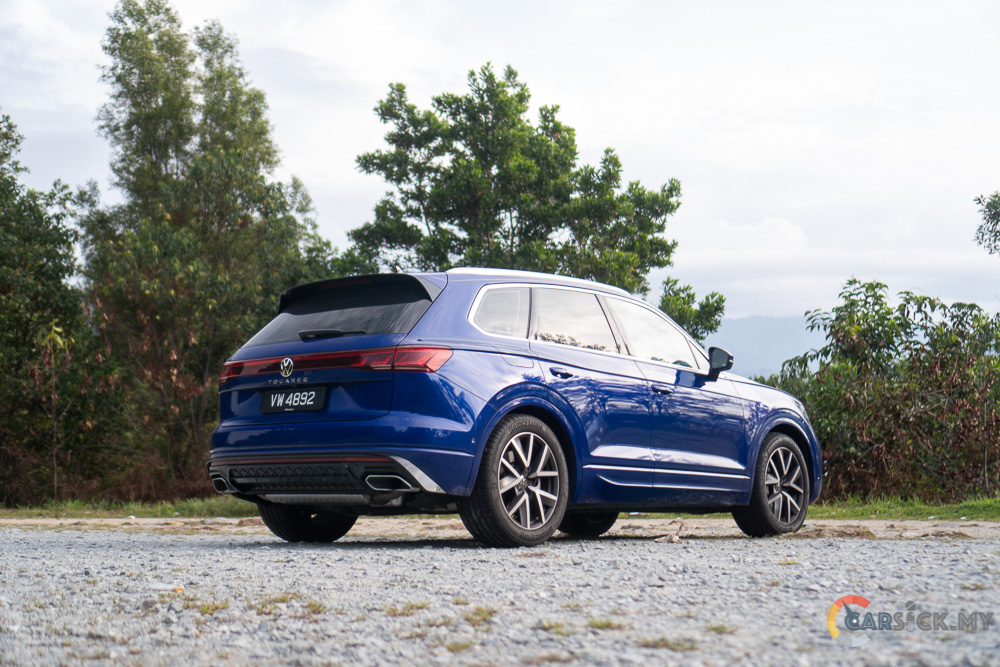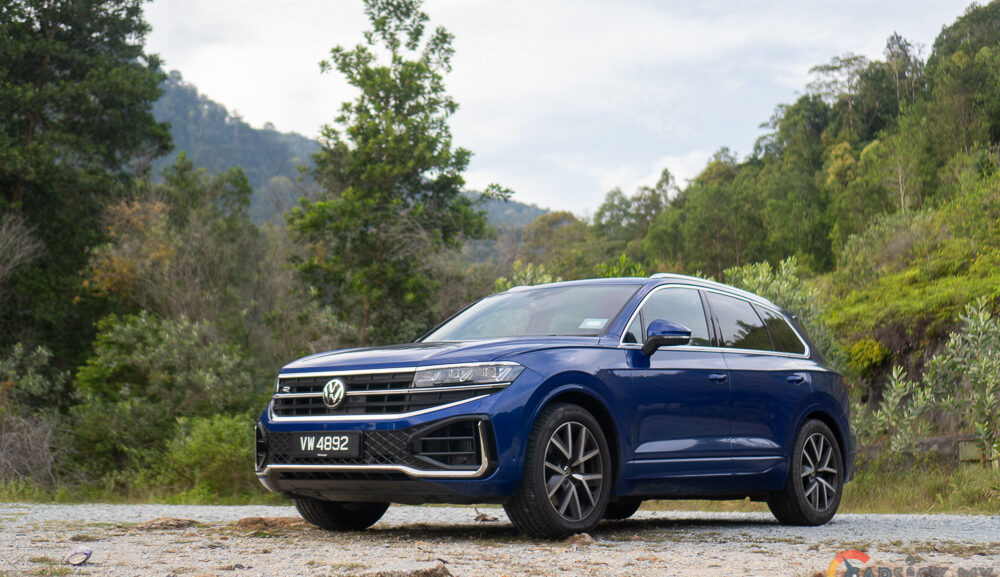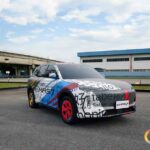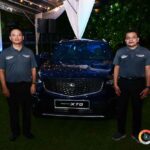The Volkswagen Touareg has been absent from Volkswagen Malaysia’s lineup for a few years now. However, in 2024, Volkswagen Malaysia decided to reintroduce the Touareg to the Malaysian market. To make it competitive, the Touareg is now assembled locally in Malaysia. It is Volkswagen’s most premium SUV, positioned to compete against the BMW X5 and the Mercedes-Benz GLE. This latest Touareg is built on the MLB platform, which it shares with the Porsche Cayenne and Lamborghini Urus. In this review, I’ll be exploring the latest Volkswagen Touareg to see if it has what it takes to compete with more premium brands.

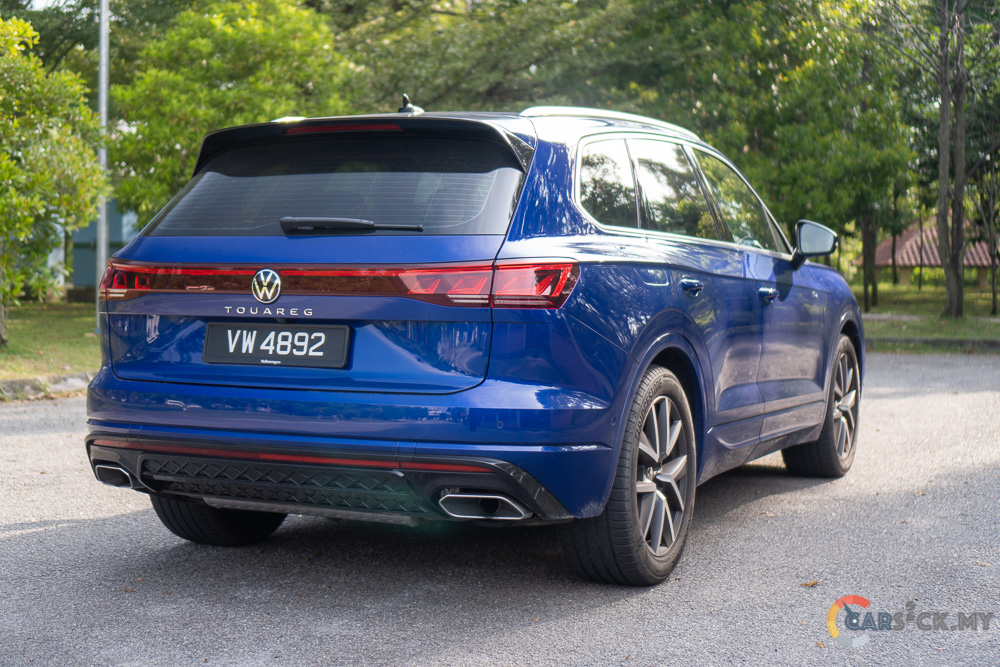 The new Touareg is a much more handsome SUV compared to its predecessor. With its iconic Lapiz Blue paint job, the SUV now boasts a more striking appearance. I particularly like the new Touareg’s design, as it exudes a muscular look that many car enthusiasts appreciate. Despite its muscular stance, it still retains a sense of elegance, so when parked beside the GLE and X5, the Touareg doesn’t look like a lesser vehicle. However, being a Volkswagen, it carries the family resemblance, which might be a downside since many people mistake it for a Volkswagen Tiguan rather than a Touareg.
The new Touareg is a much more handsome SUV compared to its predecessor. With its iconic Lapiz Blue paint job, the SUV now boasts a more striking appearance. I particularly like the new Touareg’s design, as it exudes a muscular look that many car enthusiasts appreciate. Despite its muscular stance, it still retains a sense of elegance, so when parked beside the GLE and X5, the Touareg doesn’t look like a lesser vehicle. However, being a Volkswagen, it carries the family resemblance, which might be a downside since many people mistake it for a Volkswagen Tiguan rather than a Touareg. 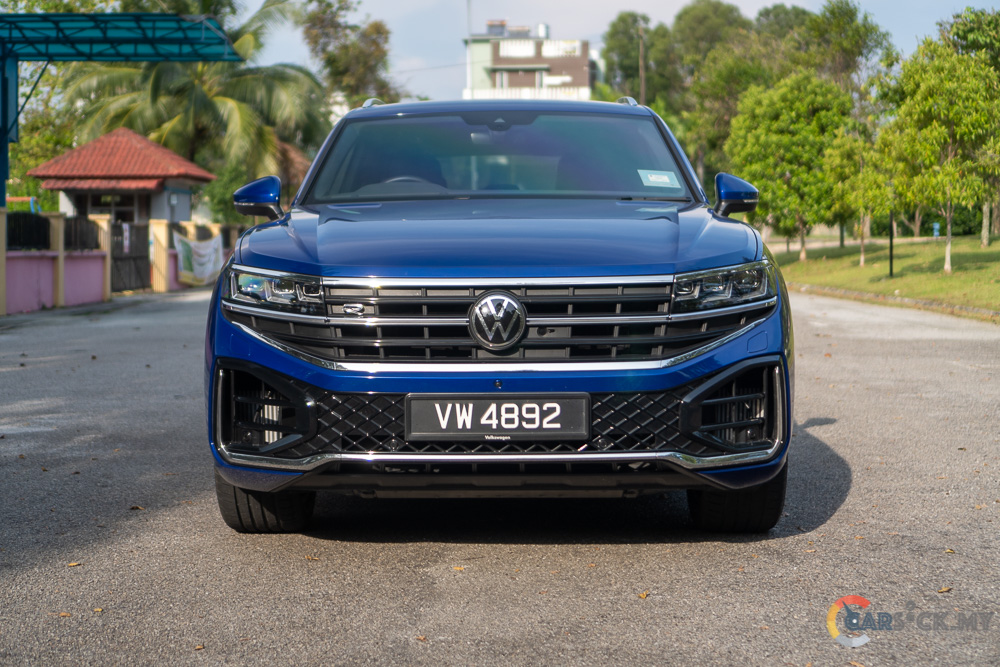
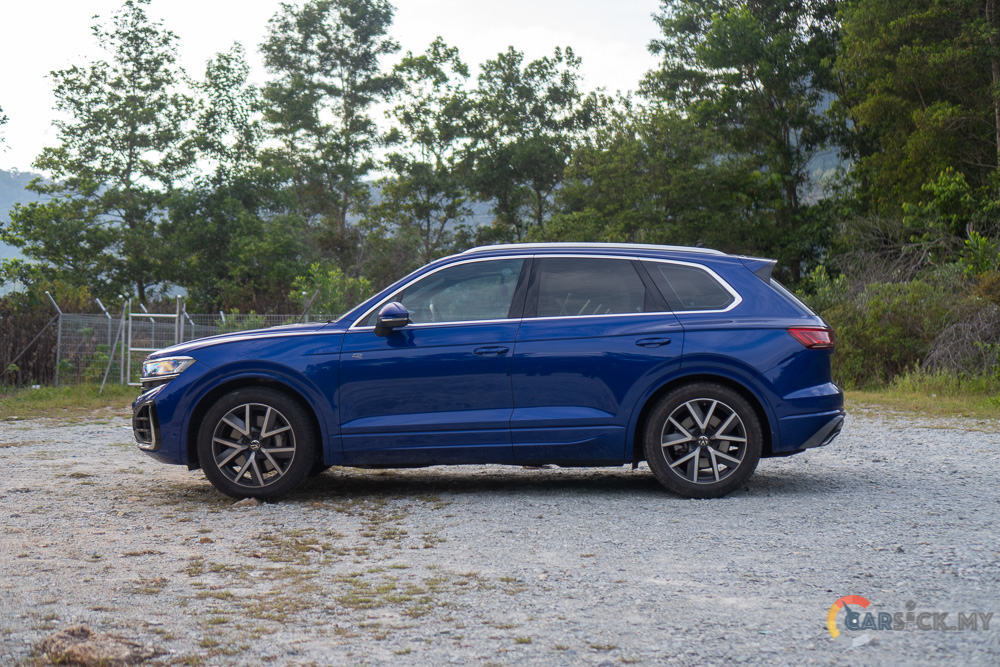

In the Malaysian market, we only get the Touareg with the R-Line package, which promises a sportier exterior. This is evident in the front bumper, which features large air intakes. These intakes not only enhance the Touareg’s appearance but also allow air to flow into the engine bay to cool the engine. Personally, the standout feature of the Touareg is the IQ Light HD Matrix headlights. These are the coolest headlights available on the Malaysian market. Apart from preventing glare for other road users when the high beams are on, these headlights can project graphics onto the road while driving. One of the party tricks of these headlights is the three different animations they project onto surfaces when you start or turn off the vehicle. 

The taillights are equally impressive, with three different animations as well. They are full LED taillights linked by a light bar, a common design trend in many modern cars. The Volkswagen badge sits proudly at the center of the light bar, and the outline of the badge lights up in the dark, giving the rear a distinctive look. The rear of the Touareg is quite squared off, complementing the overall design of the vehicle. With the R-Line kit, a significant portion of the rear bumper is adorned with blacked-out trims to enhance the sporty look. Lastly, the Touareg R-Line comes with a set of 20-inch rims wrapped in 285/45 R20 tires. While these rims look good, I think even larger rims would make the vehicle look sportier, but Volkswagen likely reserved that for the full R variant of the Touareg. 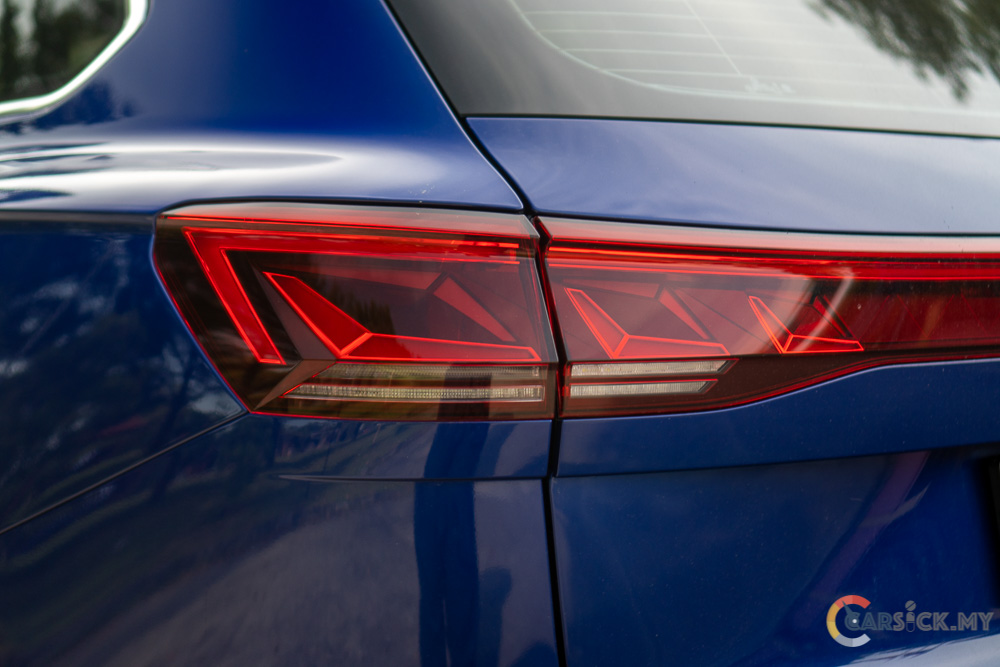
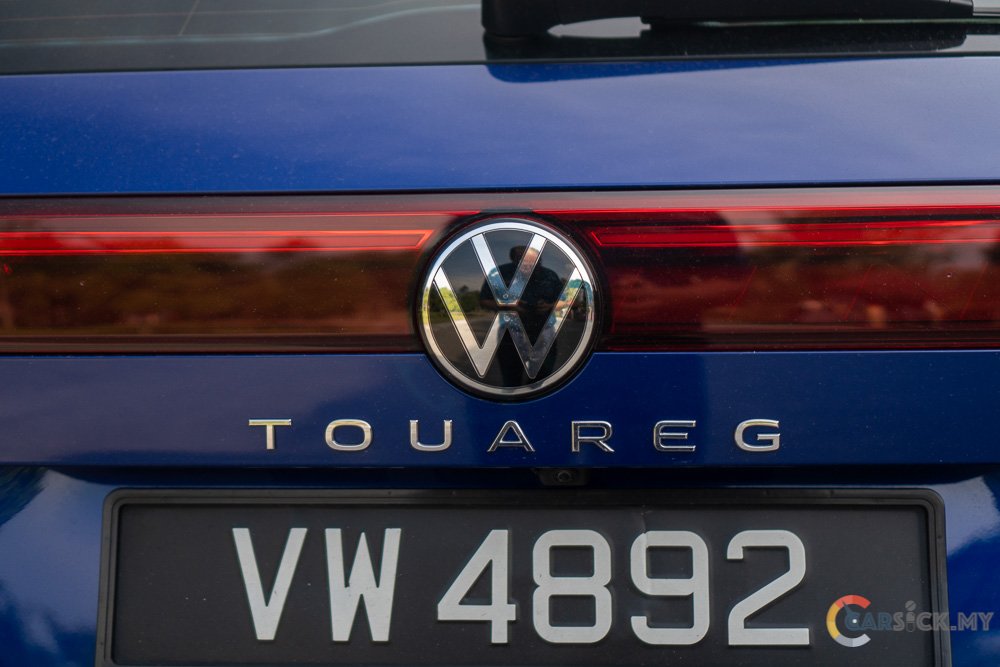
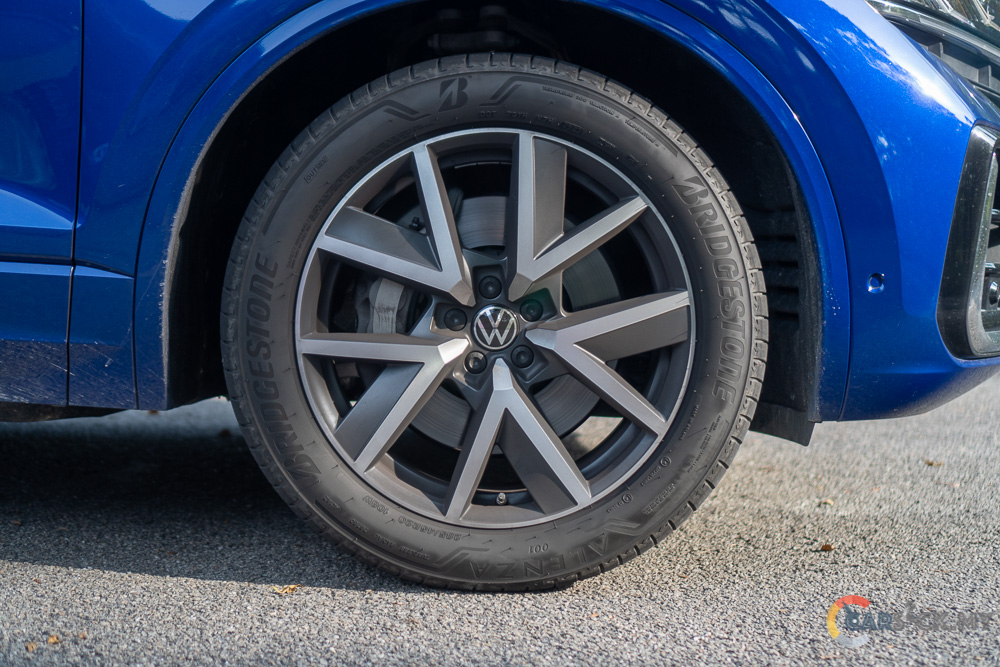
Climbing on board, you’re immediately greeted with a commanding yet cocooned interior. You can precisely find your ideal driving position thanks to the fully electric seat and steering adjustments. The dashboard design makes the driver feel like they’re in a cockpit, further enhanced by the tall center console, which houses most of the buttons and toggles. These include the gear lever, volume knob, drive mode selector, and suspension height selector. The interior feels very solid, and the use of soft-touch materials adds a premium feel. However, it doesn’t feel as luxurious as higher-end brands, which some might feel doesn’t justify the vehicle’s price. But I’m perfectly fine with it. 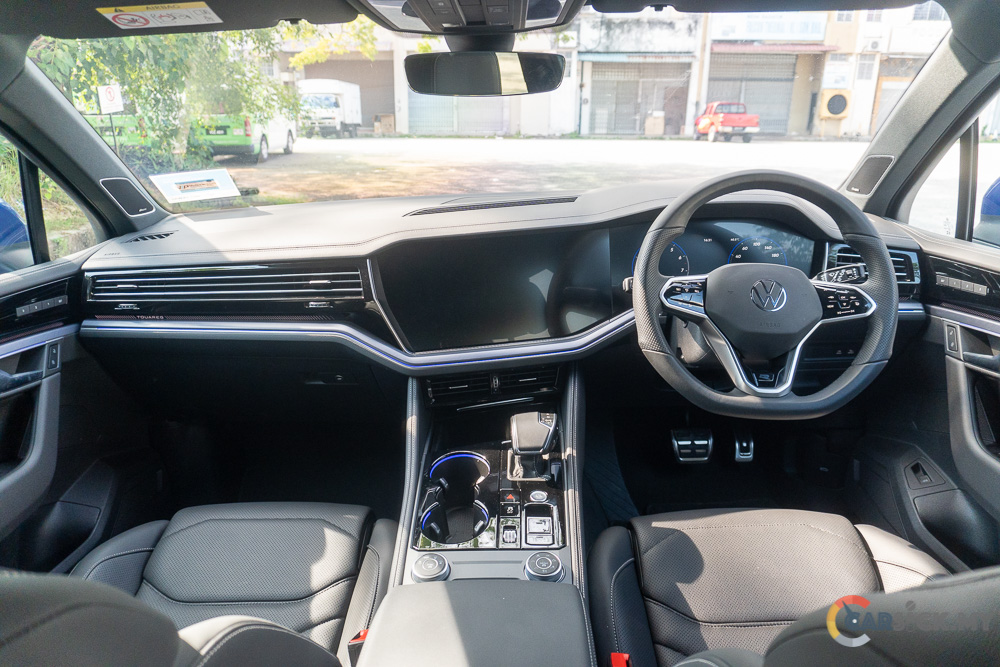
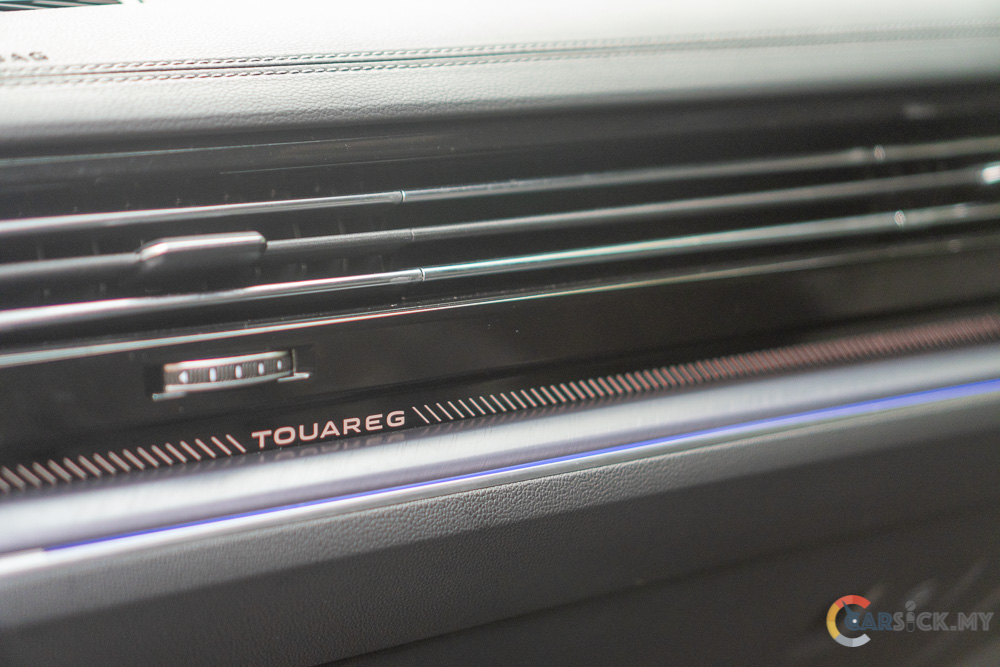
Taking center stage is the large 15-inch infotainment screen that is tilted towards the driver, making it easy to use without stretching. This high-definition screen is user-friendly, with all settings easily accessible. In typical Volkswagen fashion, the infotainment system supports wireless Android Auto and Apple CarPlay, keeping the driver connected on the go. It also includes a 360-degree camera to assist with parking. For an enhanced audio experience, the Touareg is equipped with a 12-speaker Dynaudio sound system. 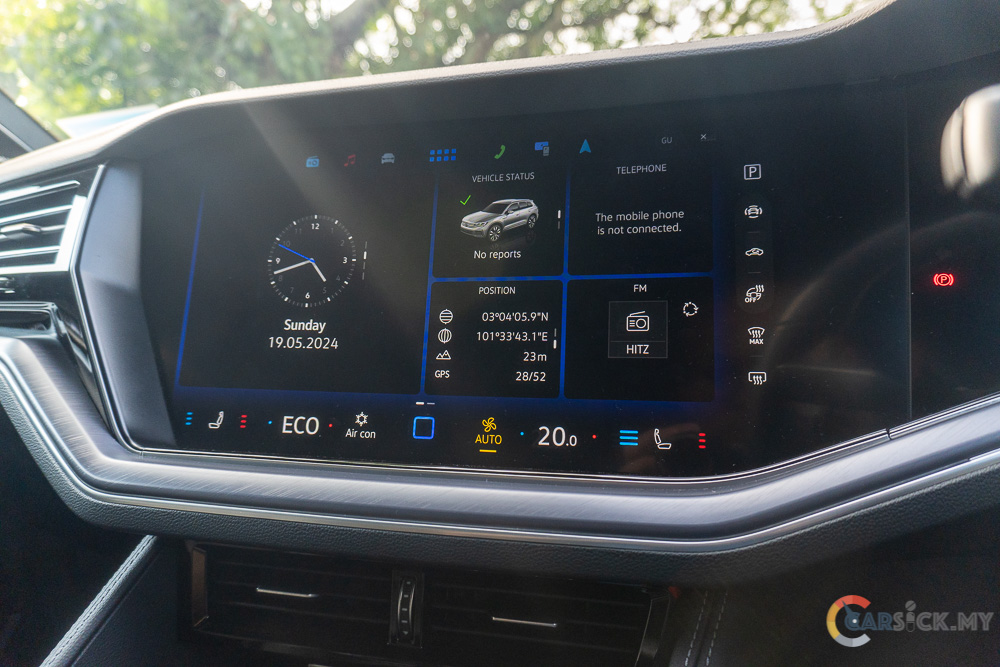
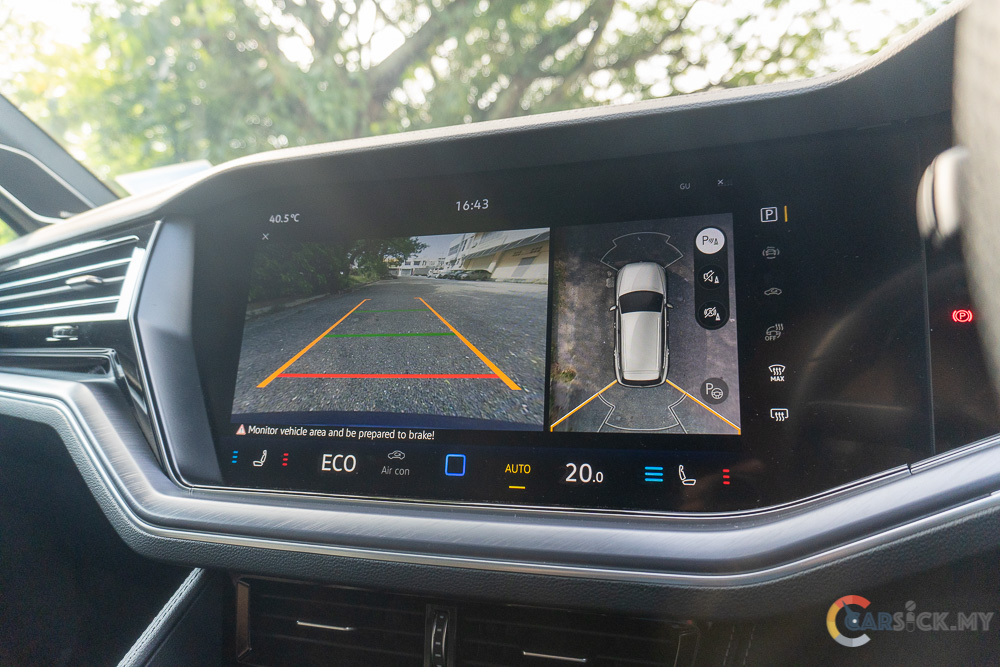
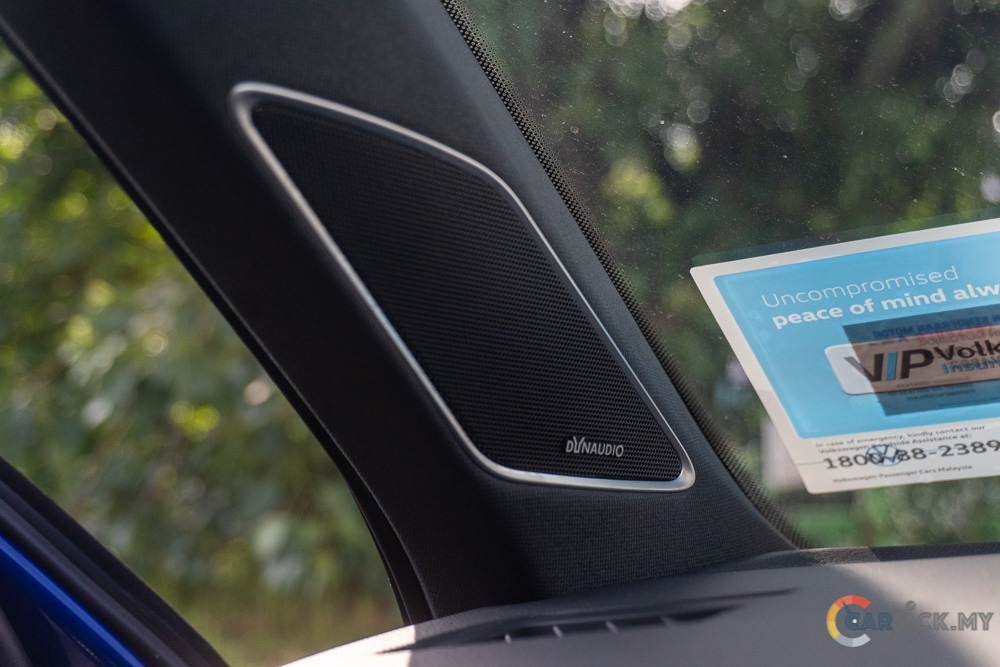
In front of the driver is a 12.3-inch digital instrument cluster, which will be familiar to anyone who has driven a modern Volkswagen. The cluster is well-organized and easy to read, but I’m not fond of the fact that the settings for the instrument cluster are within the infotainment system rather than the cluster itself. One interesting feature of the instrument cluster is the night vision display, which appears within the cluster. I tested it, and it certainly helps the driver see objects in the dark. 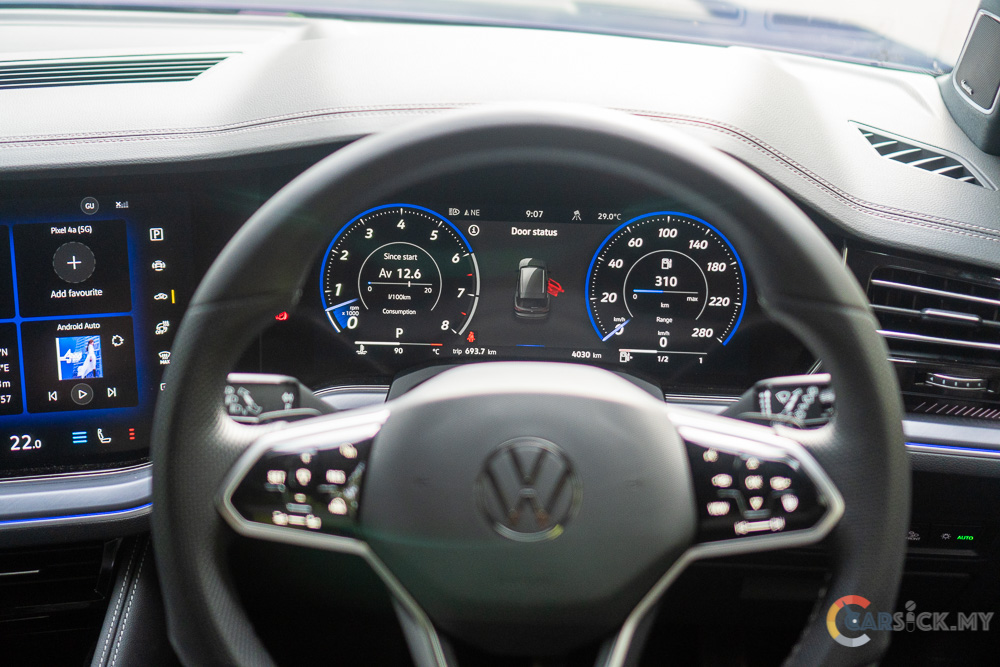
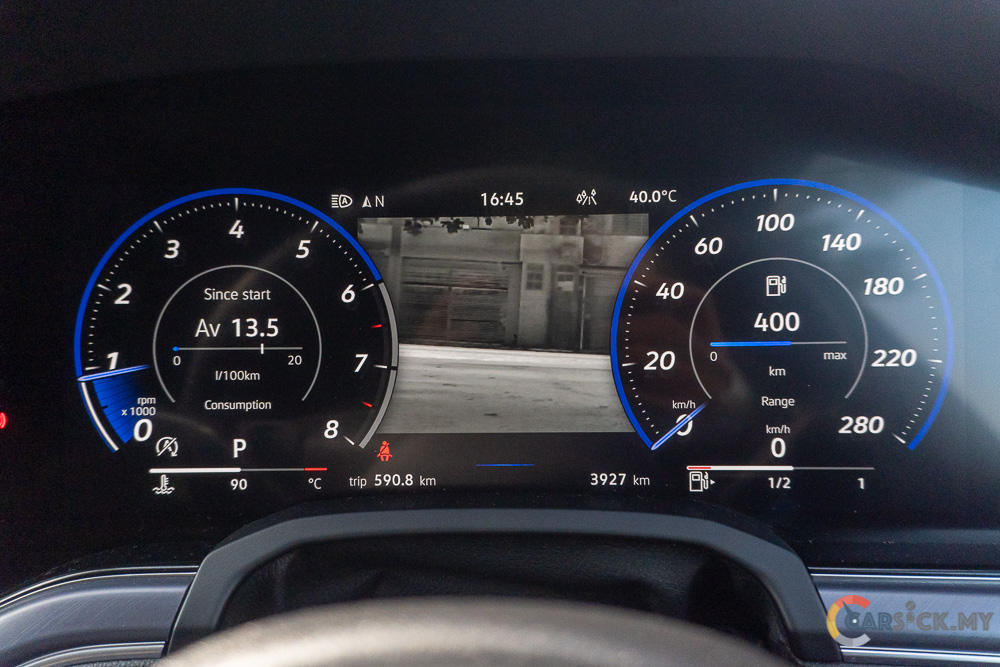
The front seats are really comfortable, with many adjustment options allowing the driver to find the perfect driving position. Additionally, the side bolsters on both front seats can be adjusted if you prefer a snug fit. Both front seats are also heated and ventilated, features that might not even be available in more expensive, luxurious competitors. The Touareg also offers 4-zone climate control, showing that Volkswagen has left no stone unturned.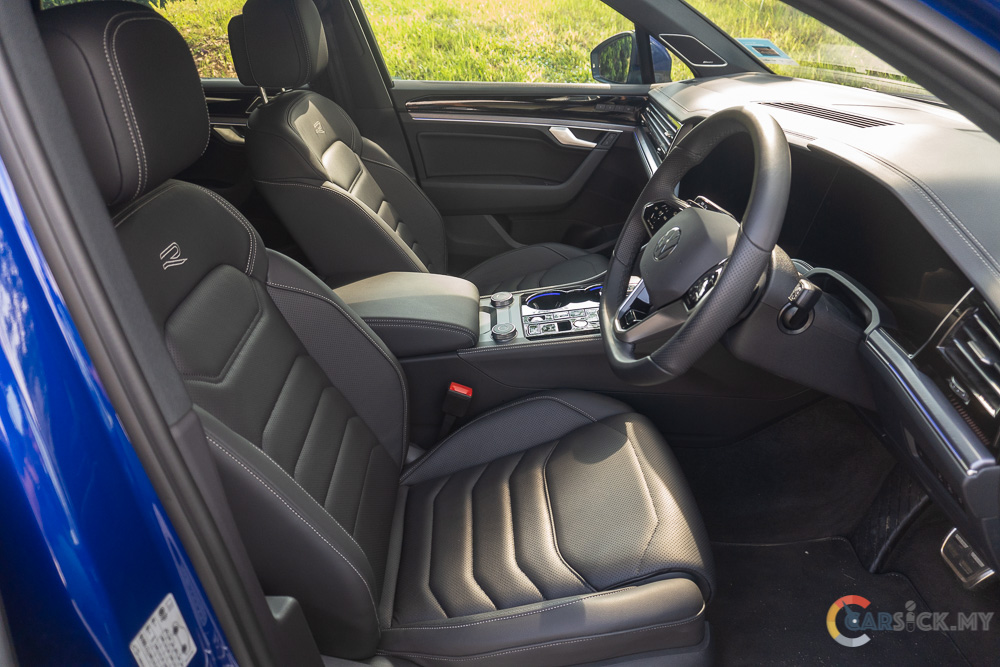
Moving to the rear seats, there’s ample space for passengers to feel comfortable, with plenty of legroom and headroom. Even with three adults in the back, there’s more than enough space. The rear seats have multiple reclining levels and can slide forward and backward as needed. Rear passengers also get four different AC vents and sunshades on both rear doors for added comfort. Behind the rear seats, the Touareg offers a massive 810-liter boot space, more than sufficient for most needs. For longer items, the rear seats fold down flat. If you find the boot floor too high, you can even lower the rear suspension to make loading easier. 
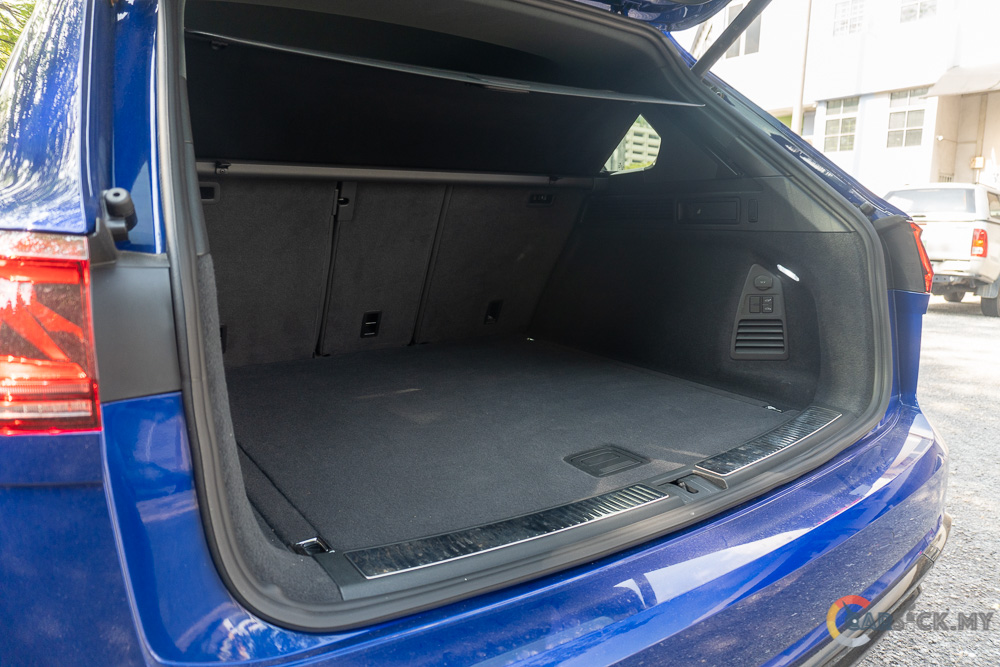
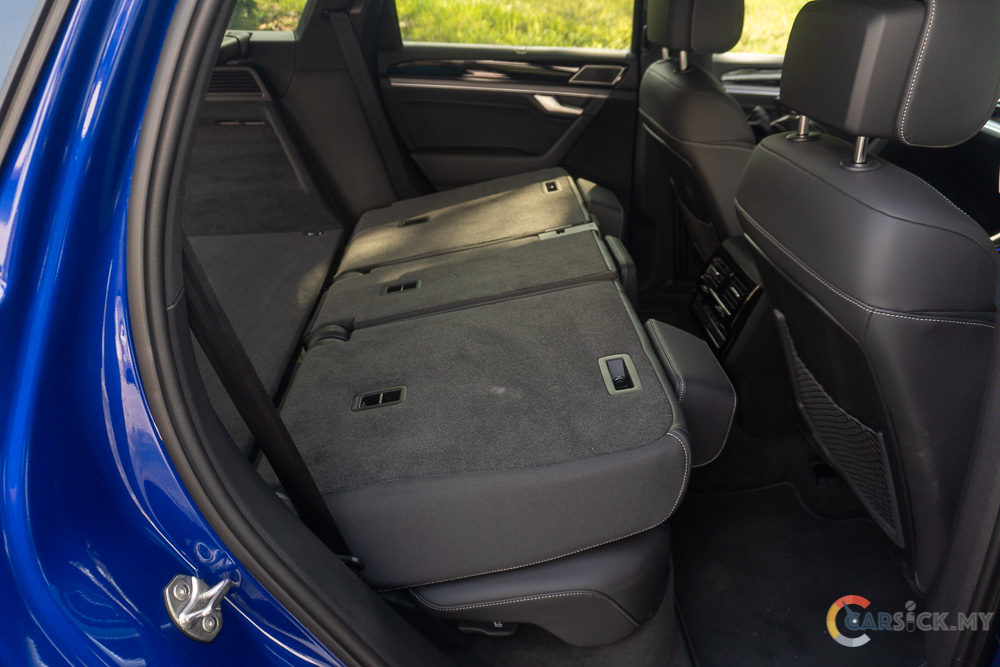
Powering the Touareg is a 3.0-liter V6 twin-turbo engine shared with several other models within the Volkswagen group. Instead of a DSG, the Touareg uses an 8-speed automatic transmission. Power is sent to all four wheels through the 4Motion all-wheel-drive system. This engine has the ability to produce 335 hp and 450 Nm of peak torque. This allows the Touareg to accelerate from 0-100 km/h in just 6 seconds and to a top speed of 250 km/h. 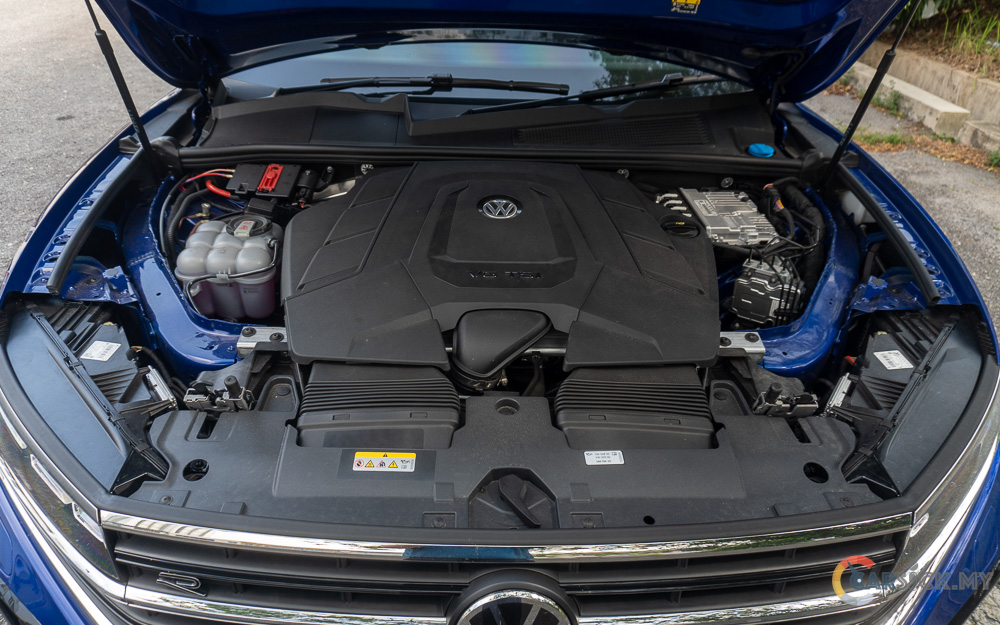

With close to 340 hp on tap, the Touareg is far from slow. It accelerates at a decent pace, doing so in a quiet and calm manner. The engine is surprisingly quiet; I could barely hear it even when accelerating. On the road, the Touareg offers seven different drive modes to suit the driver’s needs on various terrains. However, since I mostly drive on the road, I rarely changed the drive settings as the standard settings were very capable. The only mode I tried was Sport mode, but the Touareg is so comfortable that even Sport mode barely changed the vehicle’s driving characteristics, except making the engine a bit more responsive.
During my review, I had the opportunity to drive a Mercedes-Benz GLE briefly. In that short drive, I noticed that the Touareg is much quieter than the GLE. However, the GLE does feel larger compared to the Touareg. Additionally, the Touareg’s transmission is silky smooth; I could barely tell when it shifted gears. This is one of the smoothest vehicles I’ve ever reviewed. As for fuel consumption, the Touareg displayed an average of 13.2 L/100 km. While not an exceptional figure, it’s acceptable considering the vehicle’s size.
The Touareg is equipped with air suspension, offering four different height settings to suit various terrains. These air suspensions absorb bumps effortlessly, preventing unwanted jolts from entering the cabin. The suspension provides good comfort for passengers. Even in Sport mode, the suspension still feels relatively soft; I was hoping it would be a bit stiffer. However, in comparison, I noticed that the GLE’s suspension is even softer than the Touareg’s.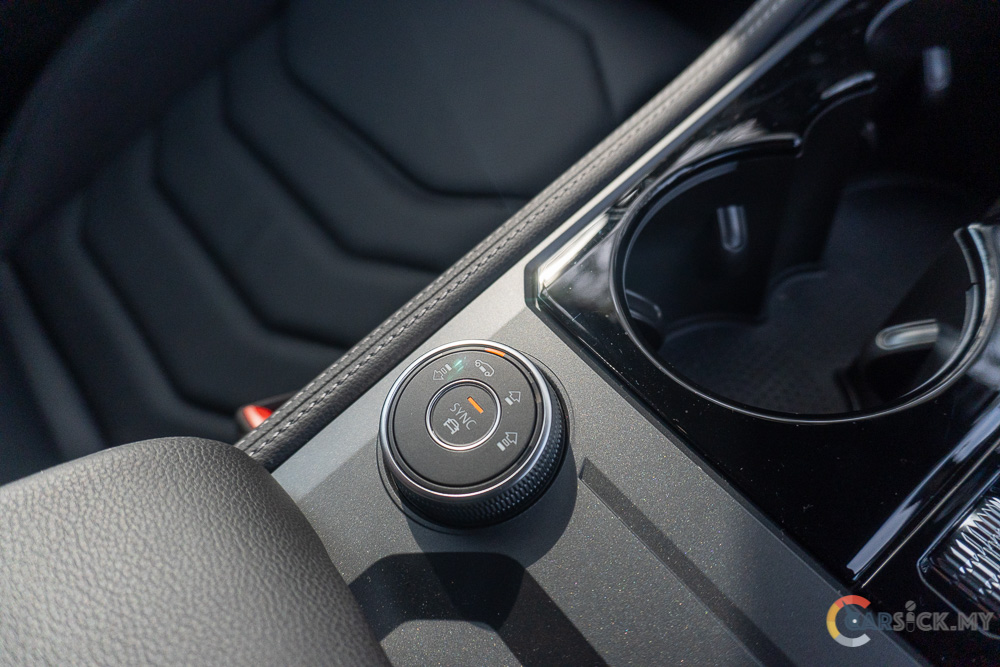
Handling-wise, the Touareg exhibits very controlled body movements when tackling corners in this large SUV. This doesn’t mean there’s no body roll, but it feels very planted when entering a corner at a decent pace. This translates to confidence-inspiring handling characteristics, helped by the wide wheel track. The only thing I’d like to see improved is better steering feedback. Currently, the steering feels quite light, even in Sport mode, reducing the amount of feedback from the front wheels. At least the steering is precise, which adds some fun when driving spiritedly.
The Touareg comes equipped with strong brakes that are easy to modulate, giving the driver precise control. Being a high-tech vehicle, the Touareg includes a comprehensive suite of safety and driver assistance systems, as expected for a modern SUV. The driver assistance systems work as expected, with no abnormalities to report. The Touareg comes standard with Adaptive Cruise Control (ACC) with Stop & Go, an advanced driver attention and drowsiness monitor, an anti-theft alarm system with interior monitoring, backup horn, and towing protection, Area View including rearview camera system, Automatic Post-Collision Braking System, Autonomous Emergency Braking (Front Assist), Front Cross Traffic Assist, Lane Assist – Lane keeping system, Night Vision, Park Assist with Park Distance Control, a proactive passenger protection system, Side Assist with Rear Cross Traffic Alert, and a Tire Pressure Monitoring System.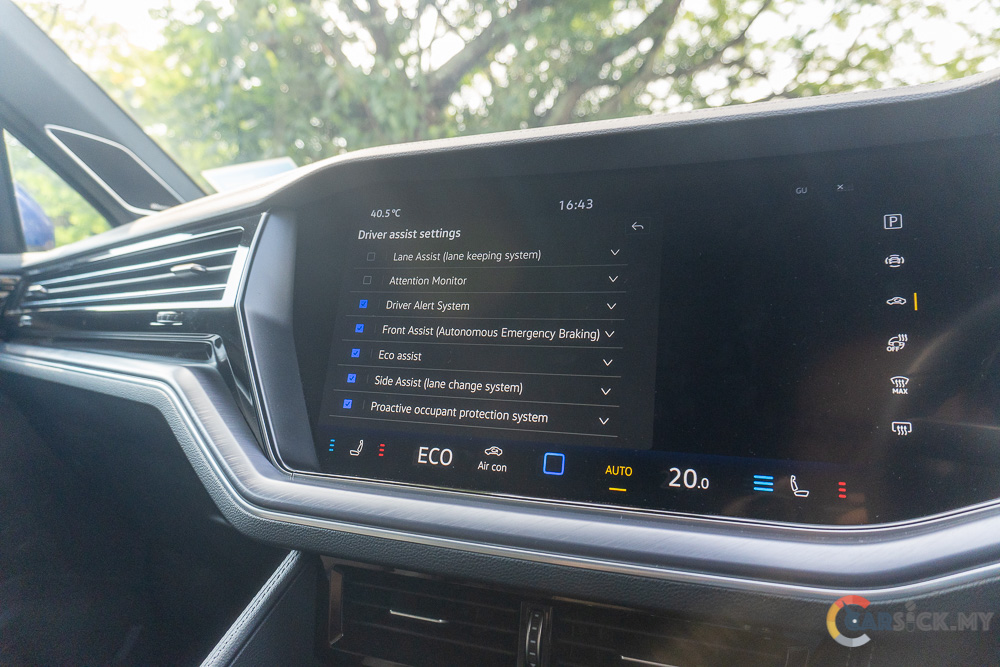
With a price tag of RM 472,272, the Touareg offers a lot of value for the money. As someone who isn’t typically a fan of SUVs, I find the Touareg quite appealing. I appreciate that it stays true to being a traditional 5-seater SUV rather than trying to be something else. The only feedback I’ve received from others is that they would rather spend the money on more premium brands. While competitors might offer a slightly more upscale interior, I think the Touareg isn’t far behind in this department. However, when it comes to technology, the Touareg has a clear edge over its competitors. But it’s also true that when you think of luxury brands, Volkswagen isn’t the first to come to mind. Nonetheless, I think the Touareg is a fantastic car and a great choice for those seeking a large SUV with advanced technology and a lot of comfort.
Check out the full photo album here. 
